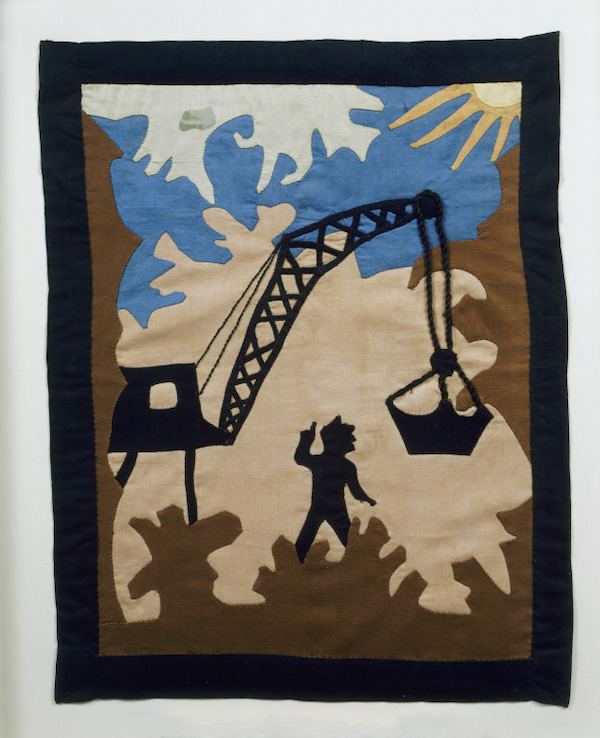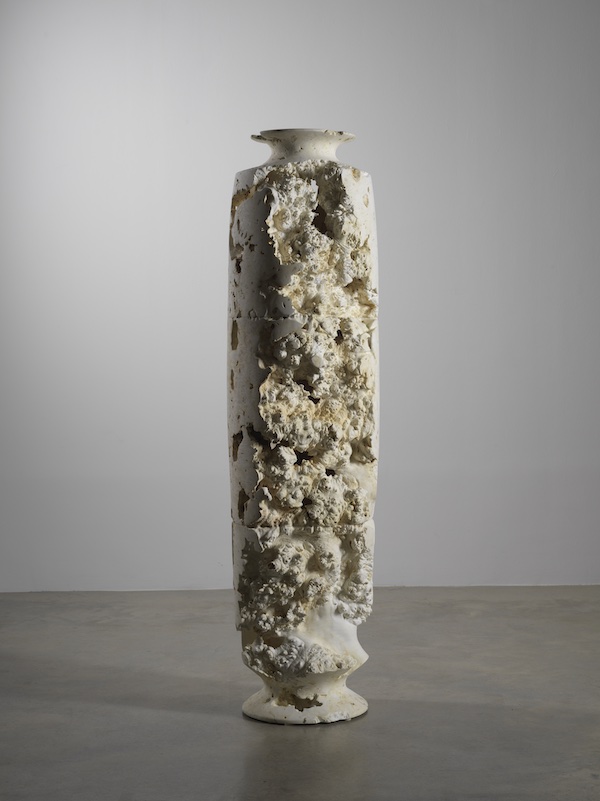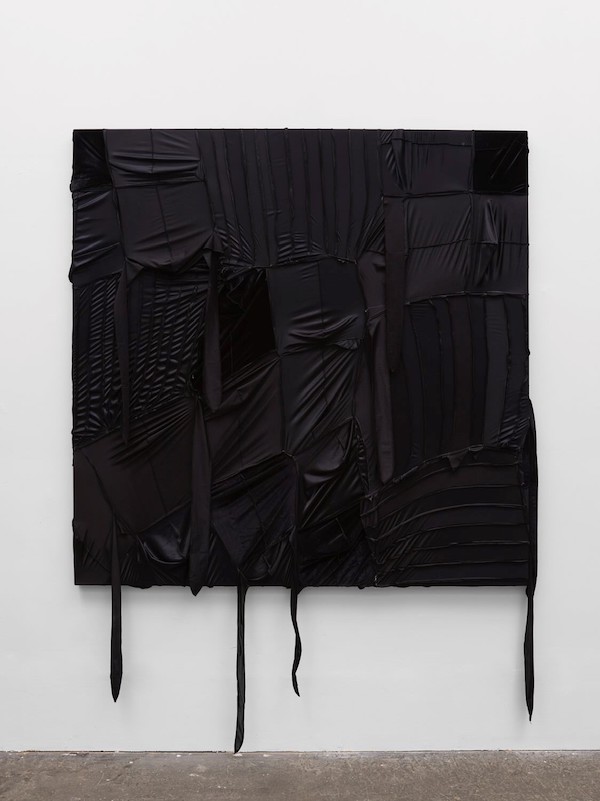
Sarah Zapata, ‘A little domestic waste IV,’ 2017. Natural and synthetic fiber, hand-woven fabric, steel, cement, and coiled rope. Image courtesy of MAD
NEW YORK – An ongoing exhibition of the Museum of Arts and Design’s (MAD) growing permanent collection of more than 3,500 objects, Craft Front & Center will feature a fresh installation of more than 60 historic works and new acquisitions dating from the golden age of the American Craft movement to the present day. Organized into themes of material transformation, dismantling hierarchies, contemplation, identity and sustainability, the exhibition illuminates how the expansive field of craft has broadened definitions of art. Craft Front & Center opens on February 4.
The exhibition opens with a presentation of rarely seen textiles. Linking three generations of pioneering quilt artists, the installation features Ruth Clement Bond’s designs for a series of Tennessee Valley Authority quilts celebrating African American contributions to modern society, Faith Ringgold’s fusion of painting, craft and literary traditions for her story quilt Shades of Alice, and Bisa Butler’s vibrant painterly portrait Lyric with a Lollipop (on loan to MAD), capturing a vivid slice of contemporary Black American life. Together, these quilts ask visitors to reconsider the art/craft divide and recognize how craft artists have galvanized the art world to broaden definitions of fine art to include a greater diversity of artists and materials.

Designer: Ruth Clement Bond; Maker: Rose Marie Thomas. Tennessee Valley Authority applique quilt design of man with crane, 1934. Cotton; pieced, sewn (unquilted). Image courtesy of MAD
Illustrating craft’s commitment to material innovation, artist Anna Mlasowsky’s Chorus of One is the result of two years of experimentation with what has been called a “glass ceramic” material at the Corning Incorporated Research Laboratory. Mlasowsky fashioned the material, originally conceived for dental, architectural, and body armor applications due to its impactand shatter-resistant qualities, into a cloak of protective scales, similar to those of an armadillo. In a video accompanying the sculpture, a dancer dons the cloak and gives a revealing performance highlighting the material’s visual and aural properties.

Eleanor Lakelin, ‘Column Vessel I/22 (from the Echoes of Amphora series),’ 2022. Horse chestnut burl. Image courtesy of MAD
Inspired by the collection’s rich holdings in artworks made from wood, the exhibition considers the material through the lens of sustainability. Among the selections is the recent acquisition of Eleanor Lakelin’s Column Vessel I (from the Echoes of Amphora series), a composite of three hand-picked sections of timber from a newly felled chestnut tree in her native England, one in an avenue of diseased trees that shaded Reading Goal, where Oscar Wilde was incarcerated in 1885 and penned a poem named for the prison.

Toshiko Takaezu, ‘Cobalt Blue,’ circa 1975. Ceramic. Image courtesy of MAD
Throughout the exhibition’s run, the museum will host public programs and workshops designed to extend the exhibition’s content and encourage a more expansive understanding of craft. On February 9, MAD Collection artists Beau McCall, Armarinhos Teixeira and Sarah Zapata — all represented in Craft Front & Center with works recently acquired by the museum — will be in discussion with independent curator M. Rachael Arauz about their innovative use of materials to express and explore the nature of identity in their individual craft practices.

Anthony Olubunmi Akinbola, ‘CAMOUFLAGE (Count Basie at Carnegie Hall),’ 2021. Durags. Image courtesy of MAD
A series of interactive workshops will be held in April and May, exploring culinary craft through a tasting of handcrafted sake, the history of indigo and hand-dyeing instruction, and the traditions and practice of Eastern Woodland-style beadwork. Additionally, this spring, the museum will launch a lifelong learning seminar series for those wishing to gain a deeper understanding of craft history and contemporary practice through conversations, field trips and artist studio visits.
For more information on Craft Front & Center and related programming, please visit madmuseum.org.



